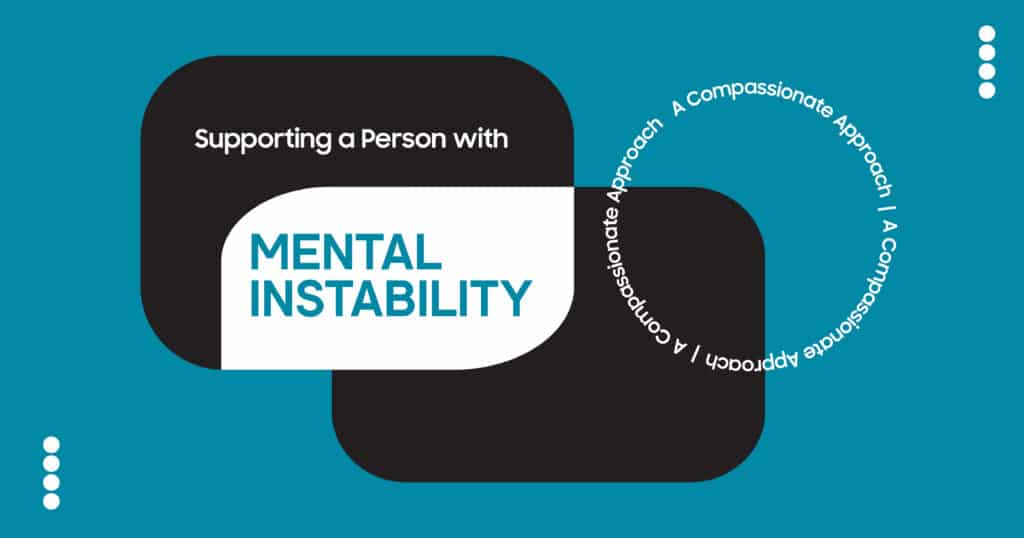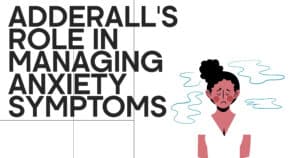Watching someone you care about struggle with mental instability is hard. You’re left feeling like there’s nothing you can do. But your support can still mean more than you think. In California for example, almost 1 in 5 adults deal with mental illness every year. Many of whom are scared to reach out. Shame and stigma often keep them silent.
You don’t need special training to make a difference. Sometimes, just showing up consistently can bring real comfort. And supporting someone else doesn’t mean forgetting yourself, it’s entirely possible to care for them and still keep your own needs in sight.
In this article, we’ll walk you through some honest, realistic ways to help, from learning how to talk about tough topics to knowing where to draw the line. You’ll find strategies for offering support while keeping your own mental and emotional balance intact.
What Is Mental Instability?
The term mental instability is not an official diagnosis. It’s a way to describe someone having a hard time handling emotions, thoughts, or actions. That struggle might be linked to a number of underlying conditions. A person might be dealing with intense emotional swings, trouble thinking clearly, or difficulties with daily responsibilities. These moments of imbalance can be signs of deeper mental health issues.
Some common causes include:
- Depression
- Anxiety, PTSD, or trauma
- Prolonged stress or burnout
Symptoms may show up as emotional unpredictability, social withdrawal, or just struggling to keep up with basic tasks. But the thing is, everyone looks different in distress. In fact, over half of those with serious mental health challenges go untreated. Why? Often, their loved ones don’t recognize what’s happening, or they don’t know how to respond.
Mental instability isn’t about “fixing” someone. It’s more about recognizing they’re in a storm, and doing what you can to be the calm nearby. Offer them a safe space. A listening ear. Remind them they’re not alone and that help exists, even if it doesn’t come right away.

Recognizing the Signs of Mental Instability
Spotting early signs gives you a chance to step in before things get worse. Mental health challenges tend to show up emotionally, physically, or behaviorally. Keep an eye out for things like:
| Category | Signs to Watch For |
| Emotional | Intense mood swings, deep sadness, irritability, numbness |
| Behavioral | Pulling away from people, ignoring duties, risky behavior, self-injury |
| Physical | Trouble sleeping or eating, exhaustion, unexplained pain, hygiene decline |
| Cognitive | Disorganized thinking, paranoia, trouble focusing, negative spirals |
Not everyone will show all these signs. Some may show just a few, or mask them well. But if you notice patterns that seem to linger or escalate, it’s time to step in gently. Sometimes, all it takes is one person to help someone decide to seek help.
Effective Communication Strategies
When someone’s mental health is fragile, your words can either build a bridge or a wall. That’s why it helps to communicate with intention. Here are a few real-world strategies that work:
- Listen Without Judgment
Avoid lines like “Snap out of it” or “It’s not that bad.” Instead, try, “Want to talk about how you’re feeling?” Let them take the lead. Make eye contact, nod occasionally, and reflect back what you hear. These simple actions tell them they’re being taken seriously. Avoiding shame is key.
- Use Calm, Clear Language
Speak slowly. Keep your words short and direct. Rather than asking “Why’d you do that?” try, “You seemed upset, what’s going on?” If they’re overwhelmed, pause and ask, “Want a moment to breathe?” Simple words go a long way in keeping things grounded.
- Validate Their Feelings
You don’t have to agree with how they feel, but you do need to recognize it. Say things like “That sounds really difficult” or “I get why that would upset you.” Validation doesn’t mean agreement. It means you’re acknowledging that what they feel is real to them, and that matters.
- Avoid Arguments
When they say something like, “Nobody cares about me,” skip the rebuttal. Don’t argue. Say, “I care. What can I do to support you?” Fighting facts isn’t the goal here, connection is. Your calmness can diffuse emotional tension more than logic ever will.
Creating a Safe and Supportive Environment
Day-to-day life has a bigger impact than most people realize. A little stability goes a long way. Even subtle changes can help reduce chaos and give someone space to breathe. Here’s how to work with a mentally unstable person in a way that creates calm:
| Strategy | How To Implement | Why It Works |
| Reduce Stressors | Lower background noise, tidy up shared areas, and avoid touchy subjects | Too much input makes things worse; peace helps people think and feel better |
| Establish Routines | Plan regular times for meals, sleep, or short walks | Predictability lowers anxiety and brings back a sense of control |
| Encourage Small Wins | Applaud even tiny efforts like brushing their hair or sending a text | Positive reinforcement builds self-confidence and motivation |
| Offer Choices | Say, “Would you rather sit here or outside?” instead of demanding | Gives control back, which mental distress often strips away |
| Limit Triggers | Be mindful of known stressors like social media, bad memories, or toxic people | Avoids unnecessary emotional spikes and builds a more stable foundation |
Creating a healing space doesn’t mean a total life overhaul. Small steps. Thoughtful adjustments. These matter more than you think.
Providing Emotional Support
Showing up consistently is one of the most powerful things you can do. You don’t need to fix everything. Just be there. Stability is everything. Let’s break it down:
- Check in often. A simple “Thinking of you” text or dropping by for coffee can mean more than a grand gesture.
- Normalize what they’re going through. Let them know they’re not alone. Saying, “Lots of people deal with this,” can reduce their shame.
- Reflective listening. Mirror what they share with phrases like, “Sounds like work has been really tough.” It makes them feel heard.
- Avoid jumping into advice mode. Unless they ask, don’t offer solutions. Try: “That sounds heavy. Want me to just listen or help figure things out?”
- Give hope without pressure. Instead of “Everything happens for a reason,” try “I believe things can get better.”
Sometimes, just being emotionally available gives them the anchor they need to keep going.
Seeking Professional Help and Resources
There might come a point when your support, while meaningful, just isn’t enough on its own. That doesn’t mean you’ve failed. It means it’s time to widen the circle. If someone’s symptoms aren’t improving or they’re showing signs of crisis intervention needs like self-harm, you’ll want to encourage them to seek out professional help.
Let them know they’re not weak for needing this. Therapy, psychiatry, or even a support group can provide tools that loved ones simply can’t. You can offer to help them search for a provider or even offer to sit with them at the first appointment. That kind of backup can make all the difference.
One helpful starting point in California is California Mental Health, which connects people with therapists, emergency care, and local mental health resources.
If they push back or say they’re “not ready,” don’t panic. It can take several conversations. Just stay available, nonjudgmental, and hopeful. Your patience can bridge the gap between fear and action.
Self-Care for Caregivers at California Mental Health
Let’s not sugarcoat it, supporting someone through mental instability can be draining. You may be juggling a lot of emotional labor, which adds up fast. If you don’t protect your own energy, you risk burnout or compassion fatigue. And when that happens, it becomes harder to help anyone, including yourself.
This is where your own self-care practices come in.
- Say no when needed. You’re allowed to have limits. It’s okay to say, “I can’t talk right now, I need to recharge.”
- Lean on your own circle. Whether it’s friends, family, or a therapist, make sure someone’s checking in on you.
- Take breaks. Seriously. Step outside. Breathe. Journal. Just be in your own body for a moment.
- Know that helping someone doesn’t mean sacrificing your own well-being.
You matter too. The better you take care of yourself, the more sustainable your support becomes. If you ever feel overwhelmed, contact California Mental Health. We offer guidance not only for those struggling but for those walking beside them.

FAQs
What are effective communication techniques for supporting someone with mental health issues?
Stick to short, sincere messages, be kind, not pushy. Listen more than you speak. Don’t try to fix everything, and definitely avoid phrases that minimize their pain.
How can I implement coping strategies when dealing with a mentally unstable person?
Use breathing techniques, yours and theirs. Help them identify triggers over time. And when things get too intense, guide them toward help.
Why are empathy and patience important in providing mental health support?
Because healing doesn’t follow a schedule. Empathy and patience create a space where someone can move at their own pace. These qualities fight against the shame and isolation that mental instability often creates.
How do I set boundaries while offering mental health support to someone in crisis?
For example, “I’m here to talk, but I also need to rest after 9.” That doesn’t make you selfish, it makes you honest. And boundaries protect the relationship in the long run.
What self-care practices should I adopt when involved in crisis intervention and mental health support?
Break up the heaviness with something joyful, music, movement, or time alone. Remember: mental health support begins with your mental health, too.







